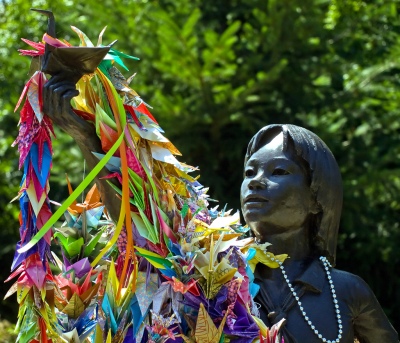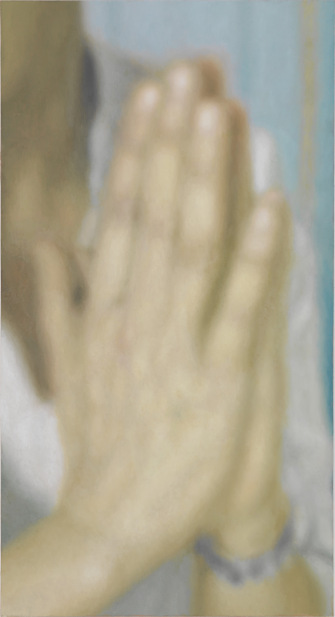The following poem was written by Thomas Merton to commemorate the beautiful act of Sadako Sasaki, a young Japanese girl, who, when she was dying as a consequence of the atomic bomb dropped on Hiroshima, spent her final days making hundreds of paper cranes, symbols of healing and peace.
Paper Cranes
How can we tell a paper bird
Is stronger than a hawk
When it has no metal for talons?
It needs no power to kill
Because it is not hungry.
Wilder and wiser than eagles
It ranges around the world
Without enemies
And free of cravings.
The child’s hand
Folding these wings
Wins no wars and ends them all.
Thoughts of a child’s heart
Without care, without weapons!
So the child’s eye
Gives life to what it loves
Kind as the innocent sun
And lovelier than all dragons!
From: The Collected Poems of Thomas Merton


 In order for art to get beyond or behind [repressive] conventions of representation, in order to expose the ideology these conceptions serve, artworks should employ ‘dis-identificatory practices’ that disrupt ‘the dance of ideology,’ and ‘distanciation’ that would ‘liberate the viewer from the state of being captured by illusions of art which encourage passive identification with fictional worlds’.
In order for art to get beyond or behind [repressive] conventions of representation, in order to expose the ideology these conceptions serve, artworks should employ ‘dis-identificatory practices’ that disrupt ‘the dance of ideology,’ and ‘distanciation’ that would ‘liberate the viewer from the state of being captured by illusions of art which encourage passive identification with fictional worlds’.

